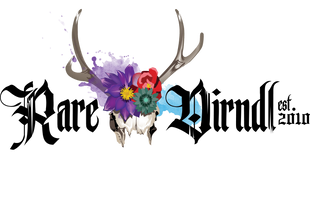How Berlin became the Capital of Street Art
In the street art community, Berlin is often referred to as “the graffiti Mecca”, “street art capital” and “most bombed city in Europe”, but how did it gain that reputation?
The Berlin street art scene is said to have begun on the west side of the Berlin Wall. The initial barbed wire fence introduced in the 1960s grew into a sophisticated security system of concrete walls, electric fences and guard towers, separating East and West Berlin and embodying all the anxieties of the Cold War and residual tension from WWII. In the eighties, the wall was reconstructed and raised to 14 feet, which made it a perfect message board and a blank canvas for West Berlin artists and dissatisfied individuals to express their opinions and affiliations. Many in the industry have noted that the initial impulse to paint on the Wall came not from the Berliners, but early settlers in the American-occupied sector consisting of draft resisters, anarchist punksand Turkish migrants, who used the wall to express their thoughts and beliefs.

The Berlin Wall also became the meeting point for the first generation of graffiti writers, some of them being the children of US servicemen, who brought the booming spirit of their local graffiti culture to West Berlin.

Following the momentous event that became known as the ‘Fall of the Berlin Wall’ on November 9, 1989, artists from all over the world were invited to paint on the Wall’s empty east side, celebrating reunification and expressing hopes for a brighter future.What still remains of the Wall in Berlin on Mühlenstraße in Friedrichshain-Kreuzberg has over one hundred murals and is now known as the East Side Gallery. It is one of the largest open-air galleries in the world.

https://www.history.com/topics/cold-war/berlin-wall
While the East Side Gallery is the most authentic existing part of the Berlin Wall, other cement segments that remain have stood as something more symbolic than just a wall. With installations in every continent, except for Antarctica, the 101 murals along the wall were created by 118 artists from 21 countries. There is actually a piece of the Berlin Wall in Lincoln Square!

http://www.chicagobulldogmedia.com/2011/08/12/cold-war-relic-quietly-memorializes-50-years/
The gallery was established one year after the fall of the Berlin Wall. The gallery has also been subject to gentrification and protests, with a section of the wall being removed for a building project. However 1.3 kilometers remain and with it many iconic, colorful murals that embody the gallery’s symbol offreedom.

https://www.travelsavvygal.com/photo-journey-berlins-east-side-gallery/
Berlin’s political history has had an enormous influence on the city’s street art. Famous political leaders, past and present, continue to be featured in Berlin’s street art. One of the world’s most famous pieces “The Kiss”, depicting East German leader Erich Honecker and his Soviet counterpart Leonid Brezhnev in a passionate kiss, is the star attraction on the East Side Gallery section of the Berlin Wall.

https://img.theculturetrip.com/1440x/smart/wp-content/uploads/2017/11/kiss-2779519_1920.jpg
In the 90s, much of the work on Berlin streets was developing on a small-scale through spontaneous installations (often illegal).After the 2000s, the city saw an increasing number of large-scale mural projects, embracing what became the most sought after trend in street and urban art. The city walls tell the story of Berlin’s rich cultural heritage of public art while also displaying new and innovative advancements.

Street art has become part of Berlin’s urban landscape like the Fernsehturm or the Brandenburger Tor. Between the years 2004 and 2008, street art exploded in Berlin! Today, it may not be noticed intentionally, but when you have a closer look, street art can be spotted everywhere. Whether people see it as ‘art’ or not, Berlin is well known for it. A graffiti piece in Friedrichshain speaks for itself: ‘Berlin without graffiti is Munich.’

In the end, whether we decide to accept the title of the “street art capital” or not, the fact remains that Berlin is one of the essential references when it comes to graffiti and street art in Europe and on a worldwide scale. To check out more of Berlin’s rapidly changing and always interesting street art scene,check out https://berlinstreetart.com or follow them on instagram @berlinestreetartguide
Sources:
https://budgettraveller.org/10-street-artists-whose-work-you-can-discover-in-germany/
https://streetart360.net/2018/03/10/20-german-street-artists-you-absolutely-need-to-know/
https://www.widewalls.ch/10-german-artists/ecb/
https://velvetescape.com/street-art-germany/
https://theculturetrip.com/europe/germany/articles/10-iconic-murals-on-the-berlin-wall/
https://theculturetrip.com/europe/germany/articles/exploring-berlins-east-side-gallery/
https://berlinstreetart.com/street-art-history-berlin-wall-graffiti/
https://www.yatzer.com/Asia-Tallest-Mural-by-Hendrik-Beikirch
–
Ever wonder which dirndl style you are? Click here to take our quiz and find out now!

